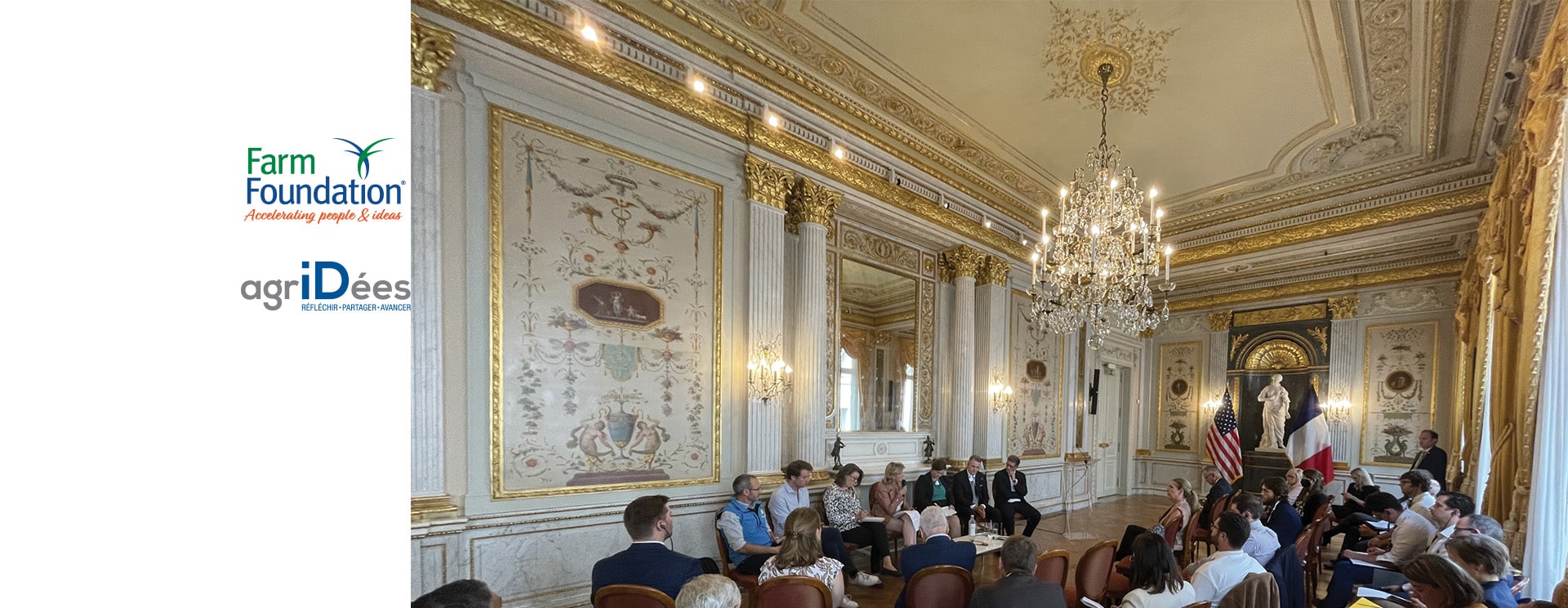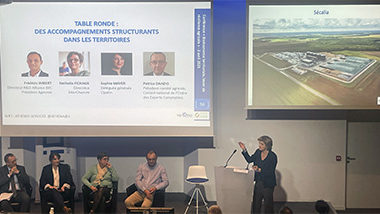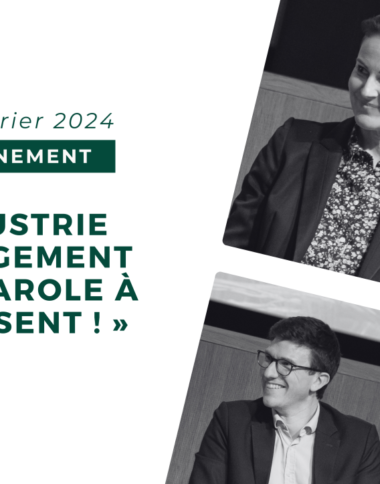Points clés
Temps de lecture : 5 min
18/09/2023
Carbon Farming in France and in the United States: Between Hopes and Realities

On September 1st, 2023, Farm Foundation and the French think tank Agridées gathered their networks at the invitation of the United States Department of Agriculture (USDA) office of the U.S. Embassy in Paris to take stock of the hopes and realities surrounding low-carbon agriculture. The event brought together a variety of players who are helping farmers make the transition to low-carbon farming, and who shared their experiences. Below are the key points from the conversation.
Strong public incentives for the transition to low-carbon agriculture
As signatories to the Paris Climate Agreement, our two countries are aiming for climate neutrality by 2050. Various policy levers are therefore being put in place to encourage the decarbonization of the economy, with a specific focus on agriculture. In France, the national Low carbon strategy (Stratégie Nationale Bas Carbone) imposes guidelines and paths for reducing greenhouse gas (GHG) emissions by 2050, and the Ministry of Ecological Transition has set up a carbon certification framework (the Label Bas Carbone) to reward the efforts of economic players to reduce their emissions and store carbon. In the United States, there is a long-term strategy including pathways to net-zero greenhouse gas emissions by 2050[1]. The government is encouraging nature-based solutions[2], and in particular climate-smart agriculture and forestry[3], with its conservation agriculture practices to increase soil carbon storage, says Garth Boyd, a partner in the consulting firm The Context Network and Farm Foundation Round Table Fellow…







